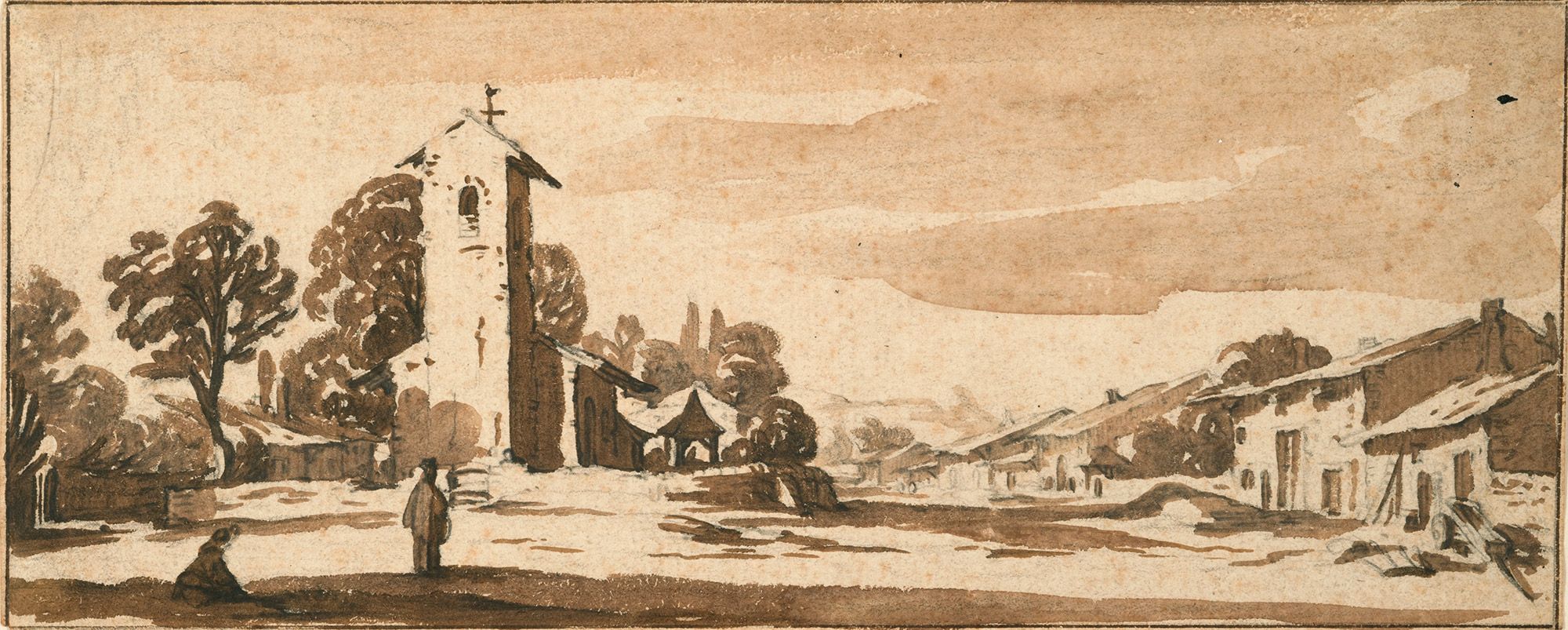FJK 019
Callot Jacques (French, Nancy 1592–1635 Nancy)
A Village Square in Lorraine
ca. 1629-1631
3 35/64 × 9 1/16 in. (90 × 230 mm)
Medium
Black chalk and brown wash on paper
Origin
Paul Prouté Collection, Paris, 1935 (Lugt Suppl. 2103c)
Private Collection, Malzéville (Meurthe-et-Moselle, Franc, acquired around 1935-1936)
Sale, Sotheby’s, Paris, June 25, 2003, no. 1
Jan Krugier Collection, Monaco, JK 6158
Jan Krugier Foundation
Bibliography
LIEURE J., Jacques Callot, Paris: Gazette des Beaux-Arts, 1924-1927, I, fig. 135 (“époque Florentine”).
TERNOIS Daniel, Jacques Callot. Catalogue complet de son œuvre dessinée, Paris: F. de Nobele, 1962, p. 167, no. 1329.
Exhibitions
Paris, Bibliothèque Nationale, 1935 (without exh. cat.).
Nancy, Musée historique lorrain, Jacques Callot 1592-1635, exh. cat., 1992, p. 313, no. 422, ill.
Notes
Born in Nancy, Jacques Callot probably left for Rome as soon as 1608 and then worked in Florence until 1621, where he could encounter Mannerism discovered with Bellange’s art in his home town. Back in Nancy in 1621, Duke Henri II granted him commissions and favors […].
This freely depicted landscape, as black chalk is used for a fast arrangement of the composition before the brush with wash shapes forms through shadows and lights, belongs to a group of studies conducted directly on the motif executed for Gaston of Orléans, during his stay at Court of Lorraine in 1629-31.
The same village, seen from another angle, seems to appear in a similar drawing at the Foundation Custodia – Frits Lugt Collection in the Institut néerlandais in Paris (Acc.no. 2482). The church, seen from another angle, is depicted in a drawing in wash at the National Museum in Stockholm (P. Bjurström, French Drawings. Sixteenth and Seventeenth Centuries, Stockholm, 1976, no. 189). Another drawing in pen by Callot, less lengthened and made for engraving, is preserved in the Chatsworth Library.
The simple composition and the use of light reveal simultaneous research to those of two masters of his time: Claude Lorrain, his compatriot, and Nicolas Poussin who settled in Rome in 1624.
Sotheby’s, Tableaux et dessins anciens et du XIXe siècle, Paris, June 2013 (translated from French)
Request for information/loan
The Jan Krugier Foundation is devoted to increasing the impact of the collection of drawings through regular loans to major exhibitions. Loan applications should include a complete presentation of the project.

